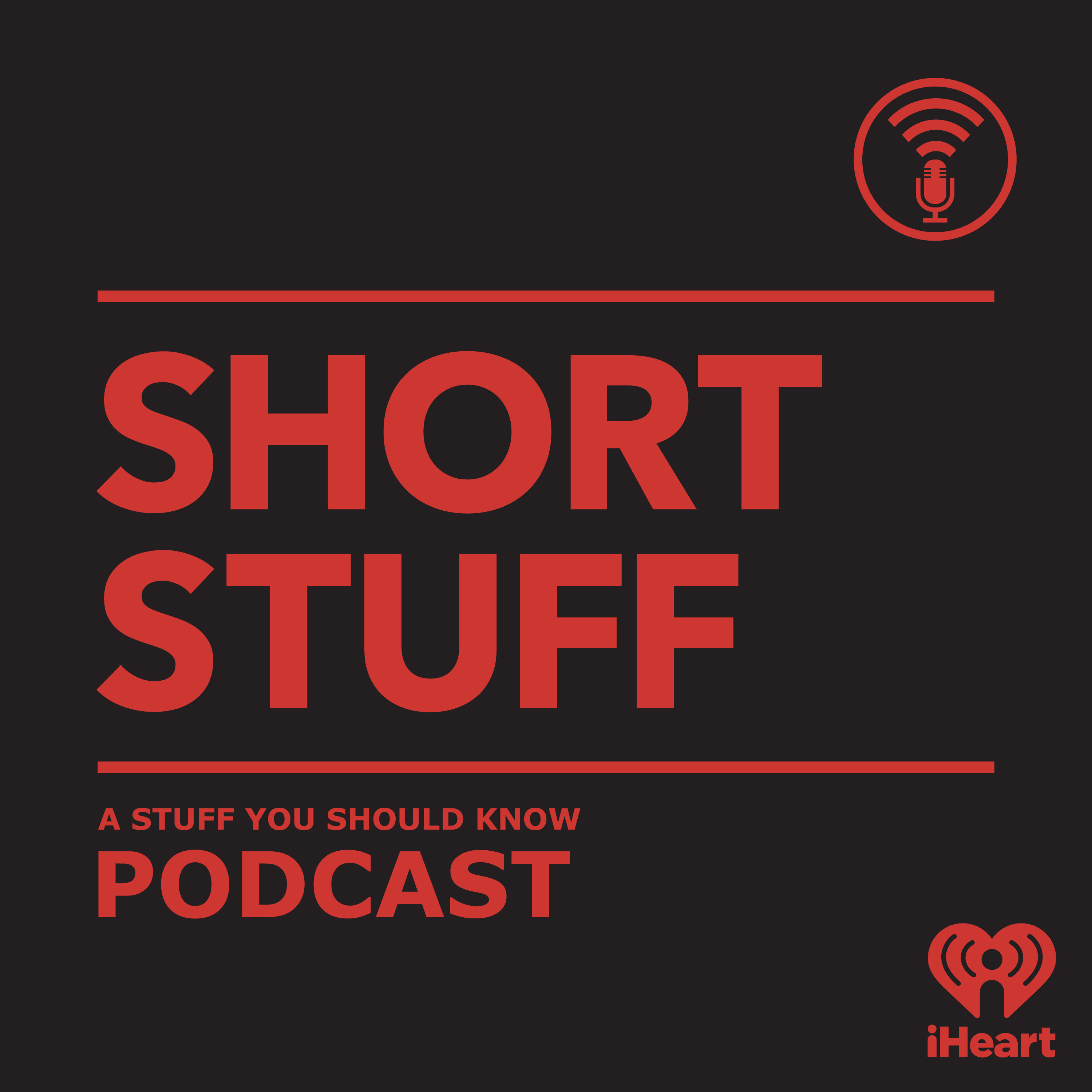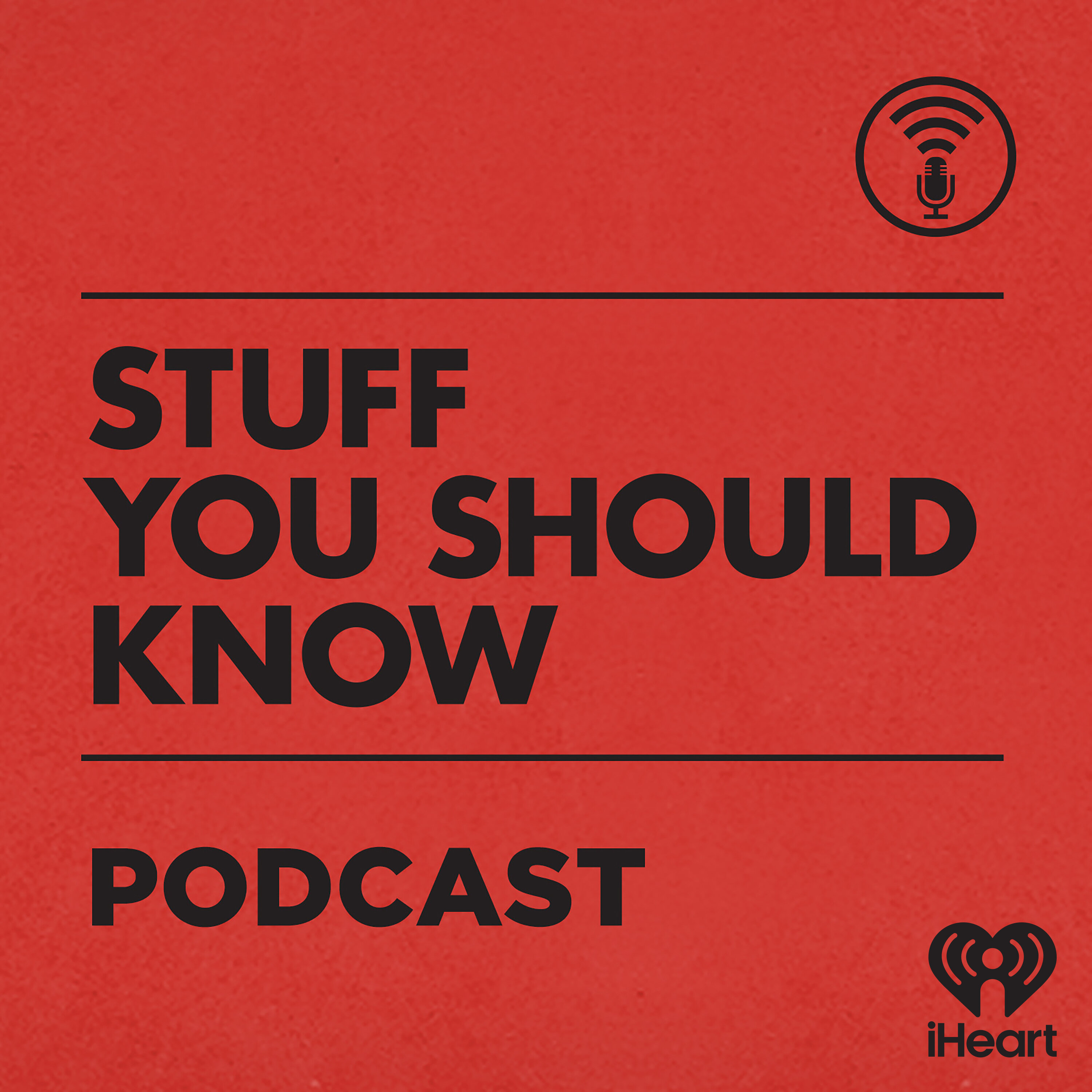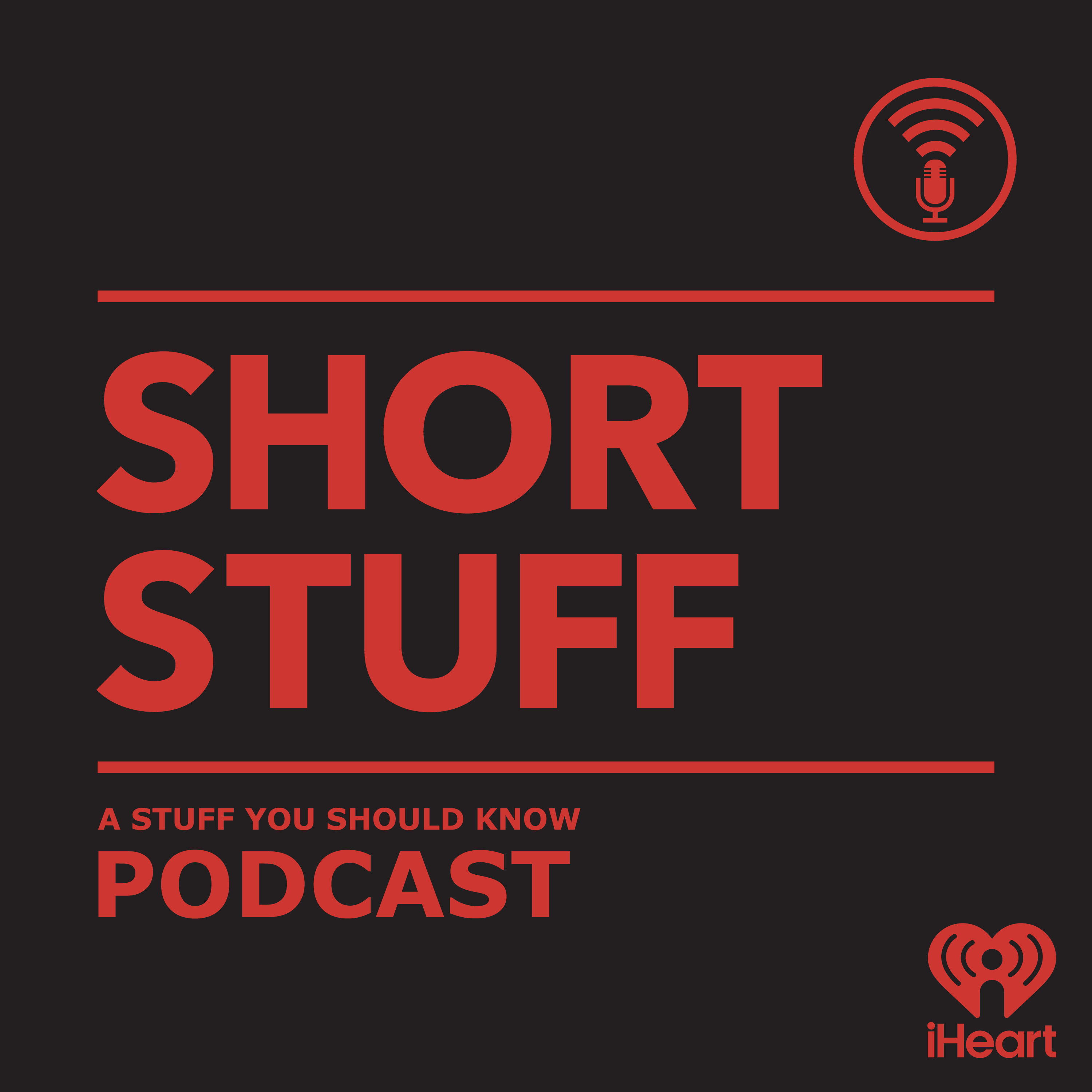Short Stuff: BM Radio
There was a time – a glorious time – when you could turn the dial in any city in the US and hear popular songs rearranged to be the most pleasant version of themselves. This was the Beautiful Music format and we are spiritually poorer for having lost it.
See omnystudio.com/listener for privacy information.
Press play and read along
Transcript
Speaker 1 This is an iHeart podcast.
Speaker 2 Living with a rare autoimmune condition comes with challenges, but also incredible strength, especially for those living with conditions like myasthenia gravis or MG and chronic inflammatory demyelinating polyneuropathy, otherwise known as CIDP.
Speaker 2 Finding empowerment in the community is critical.
Speaker 2 Untold Stories, Life with a Severe Autoimmune Condition, a Ruby Studio production in partnership with Argenix, explores people discovering strength in the most unexpected places.
Speaker 2 Listen to Untold Stories on the iHeartRadio app, Apple Podcasts, or wherever you get your podcasts.
Speaker 2
Hey, and welcome to the Short Stuff. I'm Josh, and there's Chuck, and Jerry's here, too.
And this is Short Stuff: the rootiness, Tootiness, Down-Home Sarsaparilla Drinking Podcast on the Planet.
Speaker 3 That's right. Welcome to WSYSK,
Speaker 3 your source of all the smooth podcasting sounds.
Speaker 2 That was great, Chuck. You have a future in radio, I think.
Speaker 3 Oh, great. I hear there's a bright future in radio.
Speaker 2 So we are talking radio. That's why you just did that.
Speaker 2 And we're talking about a specific kind of radio, but we should kind of go back a little bit to the beginning because, and I should, it occurred to me that there are people who listen to us, they won't even know what we're talking about with AM and FM.
Speaker 2 But if you know enough about radio, there were two bands, the AM band and the FM band. And when you, if you grew up in this late 70s, 80s, 90s, you knew that AM radio was as square as
Speaker 3 a Rubik's Cube.
Speaker 2 Yes.
Speaker 2
And the FM radio was where it was at. But it turns out that when FM radio first came on the scene in the 60s and then early 70s, it was square.
And AM radio was where it was at.
Speaker 2 That's where you'd hear hits and rock and stuff like that. FM was so super square that it actually gave birth to what we consider easy listening music today.
Speaker 3 By the way, I know this is going to be kind of a long one, but I still have to say this.
Speaker 3 When you were just stumped on trying to think of a square thing, all I could think of was the little Homer Simpson bubble above your head with just like a donut.
Speaker 2 Or that black and white donkey swatting flies on his tail.
Speaker 2
That one always gets me. No, I thought of a Citral Wilson quote that I just can't say, but it's hilarious.
All right. Well, tell me later.
Okay.
Speaker 3 All right. So you left off that AM Radio Square, FM Radio was where the rock rock hits were.
Speaker 2 I think you said the opposite. Well,
Speaker 3 if you grew up like we did,
Speaker 3
they did a switcheroo. And early on, AM Radio was the cool one.
And FM was the upstart that was trying to find its way.
Speaker 2
Yeah. And so FM essentially gave birth to that easy listening music, which is also called elevator music.
Some people call it good music.
Speaker 2 But the type of music format that we're going to talk about today is known as beautiful music. And it is a great name for a great kind of music, if you ask me.
Speaker 3 Yeah, and you know, if you heard our Musak episode,
Speaker 3 we talked a lot about this stuff. Musak is, of course, a
Speaker 3 proprietary eponym, or aka a company, right?
Speaker 2 Right.
Speaker 2 Did I use that right? Yeah. Yeah, okay.
Speaker 3 But beautiful music is that. It is like, let's take a pop hit of the day, like a Beatles song or something, and let's arrange it as an orchestral arrangement, a lot of strings.
Speaker 3 We'll either do pop hits or maybe we'll do old standards from like the Great American Songbook.
Speaker 3 And, you know, we're going to make it super polished, very easy on the ears. We're going to remove the vocals almost always.
Speaker 3 And instead of like the singing, there's going to be like a flute or a clarinet or something as the singing voice.
Speaker 3 Or if it does have human voices singing, it's probably going to be like a chorus just singing a little bit of it here and there.
Speaker 2 Yeah, or doing that kind of singing that the vocalist does on the Star Trek theme, where she's just using her voice as an instrument i don't know the star trek theme
Speaker 3 what i don't i've probably heard it but i can't call up like oh yeah that thing
Speaker 2 uh it goes
Speaker 2 it turns out i do know that actually yeah so like you said the vocals were almost always removed except when they were humming or that kind of thing sometimes they would include vocals but they like the carpenters were a little too hard-edged for beautiful music, so they would have like the Ray Coniff singers sing the song and provide the vocals.
Speaker 2 Like, this is how softened they would take these songs and make them. And I mean, if it was done right, even like the hardest core punk, even the members of CRASS
Speaker 2 would hear that song and be like, I'm not going to admit this out loud, but that is actually beautiful music.
Speaker 3 Are you going on a limb and saying that everybody likes this stuff
Speaker 2 i i no not no no no not as a genre for sure i'm just saying there were some there's this one version of what's up what's new pussycat that is way better than any version tom jones burt bachrack it's so good that i really think that basically anybody could hear it and be like this is this is a great song it actually is great whether they'd admit it or not but i don't think that that would automatically convert them to beautiful music i'm just saying in some instances done perfectly, it really is beautiful music.
Speaker 2 All right. Well, pressing forward.
Speaker 3 The BM format really took off because of an FCC ruling in 1965 that said, if you are a company that has AM stations and FM stations, you got to play different stuff.
Speaker 3 Because at the time, there were companies that are like, hey, this is great.
Speaker 3 We can just broadcast the same thing on AM and FM and get ads on AM and also get different ads on FM and essentially double down on our product.
Speaker 3
And that's like the opposite of what they were trying to do with FM to begin with. So the FCC came around in 65, said, you can't do this anymore.
You've got to play different stuff.
Speaker 3 And so Beautiful Music came along and said, hey, this is a pretty cheap solution.
Speaker 3 It's going to sell a lot of ads because it's going to be directly aimed at women, especially housewives, because you know what they're doing?
Speaker 3 They're at home all day doing that housework, listening to music. And this will make them happy while they're doing their housework.
Speaker 3 They're going to have it on the background, and we're going to pump ads in there for all the stuff that they're making the buying decisions over, which is household stuff.
Speaker 2
Yeah, because they were the target demographic of advertisers at the time. They bought most of the stuff that advertisers were selling.
They made those day-to-day decisions about purchases.
Speaker 2 So they were what teenagers are today, as far as the target demo, right?
Speaker 2 And it was just basically assumed and presumed that women would not want anything intrusive or jarring or something. They just wanted smooth, beautiful music.
Speaker 2 So much so that like a version of this was called music only for a woman. That's what the industry called the M-O-W, right?
Speaker 2 The thing is,
Speaker 2 despite the fact that this was set up to advertise to women directly, beautiful music as a whole, as a format on the radio, actually
Speaker 2 I guess the best way to put it is mellowed out as far as advertising goes and was very protective and defensive of the listener experience, which meant cutting down on ads and doing all sorts of other interesting things to ads too.
Speaker 3 Yeah, there was a company in particular that came along called Shulki Radio Productions, SRP.
Speaker 3 And
Speaker 3 they became like the biggest player in syndication, like being a syndication company for the BM format because they offered, they were like, here, we're going to send you these ready-to-play reel-to-reel tapes.
Speaker 3
It's all programmed. You just slap that sucker on there and push play and you're set.
And they said, this sounds great. And they said, oh, but wait a minute.
Speaker 3 If you want to use our stuff, like we're audiophiles. So We want the listening experience to be great and we want it to be kind of perfect.
Speaker 3 So you've got to update your broadcasting equipment because we're sending you high quality tapes and they need to come across that way.
Speaker 3 You got to hire an engineer that really knows what they're doing and make sure this is all going to go as we say it goes.
Speaker 3 And those ads, those 16 minutes of ads an hour that you're playing, you can only do six minutes of those an hour. And when you do, you got to have those lower in volume than the music, even.
Speaker 3 And all the stuff you should know, listeners stood up and cheered.
Speaker 2 Yeah, it's true.
Speaker 2 Because they found that if you had the radio on a low enough volume, those ads at six decibels less were like you couldn't even hear them sometimes at a certain volume threshold, even though you could still hear the music.
Speaker 2 And there was another thing about the ads too. They're like, you cannot use attention-grabbing tactics to advertise.
Speaker 2 And in some cases, some of these local radio stations had to go back to their advertisers and be like, Crazy Murray, we're going to have to tone this down quite a bit.
Speaker 2 And like, they had to re-record, rewrite ads to follow these Shulkie standards.
Speaker 2 And the reason that Shulky could get away with this was because they were selling not just like pre-recorded tapes that you could just put on and have your radio station, they were selling what Musak did as well.
Speaker 2 That there was a scientific basis to this that
Speaker 2 like followed the rhythm of the day and like built up and crested and then waned and then built up and crested and waned, just like Muzak.
Speaker 2 The thing is, is just like Muzak, that was essentially totally made up.
Speaker 2 But Shulki still had the data to prove it. People who listened to beautiful music radio listened essentially all day.
Speaker 3 Yeah, it feels like a good time for a break.
Speaker 2 Agreed.
Speaker 3 And we'll be right back to finish up with BM Radio right after this.
Speaker 3 learning things with chocolate junk.
Speaker 3 All the base of future nights.
Speaker 3 Attention, parents and grandparents. If you're looking for a gift that's more than just a toy, give them something that inspires confidence and adventure all year long.
Speaker 3 Give them a Guardian bike, the easiest, safest, and number one kids' bike on the market.
Speaker 2 Yeah, with USA-made kids-specific frames and patented safety technology, kids are learning to ride in just one day with no training wheels needed.
Speaker 2 It's why Guardian is America's favorite kids' bike and the New York Times and Wirecutters' top pick three years in a row.
Speaker 3 That's right. My daughter has a Guardian bike, and she loves it, and that thing was really easy to put together.
Speaker 3 And get this, this holiday season, Guardian is offering their biggest deal of the year, over 40% in savings on all bikes, plus $100 in free accessories.
Speaker 3 Guardian bikes have become one of the most sought-after gifts of the season, and inventory is going fast, so don't wait. Join over a half a million families who discovered the magic of Guardian.
Speaker 3 Visit guardianbikes.com to shop now.
Speaker 1 Tired of spills and stains on your sofa? Wash away your worries with Anibay. Anibay is the only machine-washable sofa inside and out where designer quality meets budget-friendly prices.
Speaker 1 That's right, sofas start at just $699.
Speaker 1 Enjoy a no-risk experience with pet-friendly, stain-resistant, and changeable slip covers made with performance fabric.
Speaker 1 Experience cloud-like comfort with high-resilience foam that's hypoallergenic and never needs fluffing. The sturdy steel frame ensures longevity, and the modular pieces can be rearranged anytime.
Speaker 1 Shop washable sofas.com for early Black Friday savings up to 60% off site-wide, backed by a 30-day satisfaction guarantee. If you're not absolutely in love, send it back for a full refund.
Speaker 1
No return shipping or restocking fees, every penny penny back. Upgrade now at washable sofas.com.
Offers are subject to change and certain restrictions may apply.
Speaker 3
All right, we're back. I think where we left off, Shulkey was doing pretty good business.
Crazy Murray was reduced to slightly eccentric Murray.
Speaker 3 And
Speaker 3 they were selling like hotcakes and they had the ratings to prove it, like you said, even though the science was not true. And they were listening for hours and hours and hours.
Speaker 3 But that posed a problem, or I guess presented a problem, which was, hey, they're listening for so many hours a day, they're just having to hear the same playlist in order, basically, when it loops back around.
Speaker 3 And we can't get these tapes out the door fast enough to you guys.
Speaker 3 So people have like a, you know, because they they were concerned about the listener experience. And certainly, listening to a playlist on a loop is not a good one.
Speaker 3 And so, some companies came along that said, All right, well, let's just start hiring conductors and arrangers and putting together our own stuff until a company called Bonneville came along with a really unique idea, right?
Speaker 2 Yeah, Bonneville did what Shulky did: like you would get pre-recorded tapes of beautiful music from them, but you also had to have essentially a random automatic tape player that would select a tape, a song from a tape, at random.
Speaker 2 So even though you had like the same set of, say, 50 songs, there was never going to be a playlist over the course of like, say, 12 hours that was the same as before.
Speaker 2 Same songs here or there, but never the same entire playlist starting over every 12 hours.
Speaker 3 Yeah, so they'd send tapes and packages.
Speaker 2 Tapes and tapes.
Speaker 3 Tapes and tapes. Oh, man, I miss those guys.
Speaker 3 And then, yeah, I mean, a pretty good technology at the time to randomly select and queue up different songs. So it was a pretty big leap forward.
Speaker 2 Well, Beautiful Music itself was basically an incubator for figuring out how to standardize and automate radio. That's where, that's the cradle of it is beautiful music, weirdly enough.
Speaker 3
Yeah, and it spread throughout the country as a format. Every city had at least one station.
If you were a big city, you probably had a few.
Speaker 3 A lot of times it was like, you know, in Detroit, W-J-O-I, like, very mellow call signs.
Speaker 3 They just wanted to really put out, like brand themselves as BM radio because it was such a big deal, but it wasn't a big deal for that long
Speaker 3 because, you know, buying power shifted as rock and roll came along and younger listeners became the dominant sort of listener of radio.
Speaker 3 And one by one, they kind of, you know, BM radio stations switched over, which is a very jarring thing for any. radio station format change.
Speaker 3 I'm sure we've all suffered those where you're like, well, I can't listen to this station anymore because you're just not the same radio station.
Speaker 2 Do you remember the opposite happening when 99X came out in the early 90s and they played like the Smiths and it was like, what are the Smiths doing on the radio? This is awesome.
Speaker 3 Yeah, because 99 in Atlanta before that was sort of cheesy pop and all of a sudden it was
Speaker 3 alternative music, which was the first, the first true alternative station in Atlanta. Yeah.
Speaker 2 Like truly alternative too, especially at first.
Speaker 3 Yeah, I was a 96 rock kid, but then
Speaker 3
when 99X came along, I was into that. But then 99X got really bad, too.
Right.
Speaker 2 But at first, it was pretty great.
Speaker 3 No, I agree, because you couldn't hear the Smiths on the radio unless you went left of the dial, which I was doing with the great Album 88.
Speaker 2 Oh, Album 88. Guys,
Speaker 2
that's so bad for anybody who didn't live in Atlanta while Album 88 was on the air. It was so great.
It had the best shows. They played the best regular rotation music.
Speaker 2
It was a great, great radio station. And you can't find it anywhere.
Nobody's archived it, sadly enough.
Speaker 3 I think they still have it on the weekends.
Speaker 2 Do they?
Speaker 3 Yeah, the weekday they switched over to NPR, which is dumb because we already have an NPR station.
Speaker 2 Yeah, they play basically the same thing.
Speaker 3 Yeah, but I'm still pretty sure that Alp Madi 8 exists on the weekends.
Speaker 3
And if you haven't heard of it, you maybe have heard of the great WFMU out of New Jersey. It's our version of WFMU.
But most every city had a great left of the dial station.
Speaker 2 Well, this one was the best left of the dial station. I agree.
Speaker 2 Do you remember Adam Bomb?
Speaker 2 He had like a soul show.
Speaker 3 No, I don't remember that one.
Speaker 2 Soul Kitchen, I think it was called. Oh, okay.
Speaker 3 I remember Soul Kitchen.
Speaker 2
Yeah, that was Adam Bomb. And that's definitely not archived anywhere on the internet.
So if anybody has old tapes of Adam Bomb's Soul Kitchen, please post them.
Speaker 3 Yeah, they had Reeling in the Ears was a good show. Their Sunday morning reggae show was amazing.
Speaker 2 Do you remember the Sunday, Saturday morning cartoon theme
Speaker 2
show? That was a good one, too. Good stuff.
I think we should just put one last thing. You said that a BM station started to drop like flies in the 80s in particular.
Speaker 2 By 1990, they were basically gone. There was a fictionalized
Speaker 2 version of this event.
Speaker 2 And we like to call that fictionalized version WKRP in Cincinnati.
Speaker 3 You know what? I did not remember this, and I love that show until you included it in the article. And I was like, wait a minute, I do remember the pilot.
Speaker 3 Like, I remember that happening.
Speaker 2
That's what happened. That's why they hired Andy as station manager because they were converting from beautiful music to rock.
And that's exactly what was going on at the time around them. Yeah.
Speaker 3 And that's why Dr. Johnny Fever and Venus Flytrap all were stoked about their job.
Speaker 2 Yeah. And Herb Tarlick had to go to Crazy Murray and be like, Can we
Speaker 2 turn you upward now? Because we're a rock station.
Speaker 3 That's right.
Speaker 2 And Lonnie Anderson said, Did I type this right?
Speaker 3 And leaned over the desk.
Speaker 2 That was a good show.
Speaker 2 Oh, let's thank our
Speaker 2 sources for this episode. Chuck Tarver at the University of Delaware, Go Blue Hens, Ken Mills at Radio World, Diffin.com, Ken Siapura at Cradoville, and the Forum at Radio Discussions.
Speaker 2 And since we have nothing more to say about beautiful music, Short Stuff is out.
Speaker 1 Stuff You Should Know is a production of iHeartRadio. For more podcasts on iHeartRadio, visit the iHeartRadio app, Apple Podcasts, or wherever you listen to your favorite shows.



